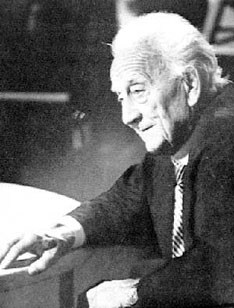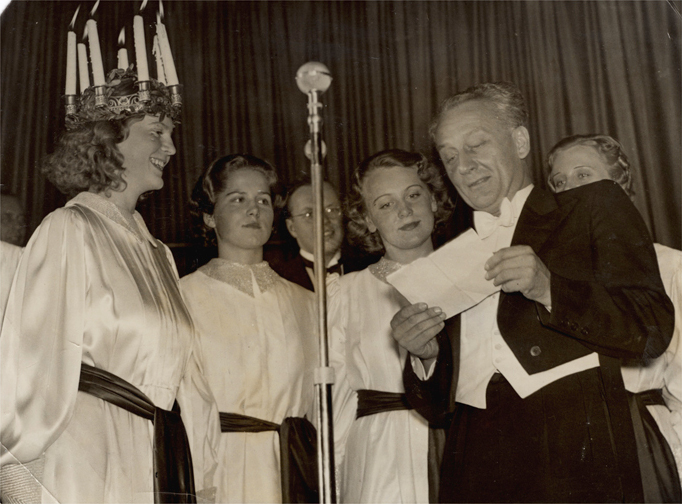 |
| Albert Szent-Gyorgyi |
Albert von Szent-Györgyi was born in Budapest on September 16, 1893, the son of Nicolaus von Szent-Györgyi, a great landed proprietor and Josefine, whose father, Joseph Lenhossék, and brother Michael were both Professors of Anatomy in the University of Budapest. He matriculated in 1911 and entered his uncle's laboratory where he studied until the outbreak of World War I when he was mobilized. He served on the Italian and Russian fronts, gaining the Silver Medal for Valour, and he was discharged in 1917 after being wounded in action. He completed his studies in Budapest and then worked successively with the pharmacologist, G. Mansfeld at Pozsony, with Armin von Tschermak at Prague, where he studied electrophysiology, and with L. Michaelis in Berlin, before he went to Hamburg for a two-year course in physical chemistry at the Institute for Tropical Hygiene.
In 1920 he became an assistant at the University Institute of Pharmocology in Leiden and from 1922 to 1926 he worked with H. J. Hamburger at the Physiology Institute, Groningen, The Netherlands. In 1927 he went to Cambridge as a Rockefeller Fellow, working under F. G. Hopkins, and spent one year at the Mayo Foundation, Rochester, Minnesota, before returning to Cambridge. In 1930 he obtained the Chair of Medical Chemistry at the University of Szeged and in 1935 he also took the Chair in Organic Chemistry. At the end of World War II, he took the Chair of Medical Chemistry at Budapest and in 1947 he left Hungary to settle in the United States where he is Director of Research, Institute of Muscle Research, Woods Hole, Massachusetts.
Szent-Györgyi's early researches at Groningen concerned the chemistry of cell respiration. He described the interdependence of oxygen and hydrogen activation and made his first observations on co-dehydrases and the polyphenol oxidase systems of plants. He also demonstrated the existence of a reducing substance in plant and animal tissues. At Cambridge and during his early spell in the United States, he isolated from adrenals this reducing substance, which is now known as ascorbic acid. Returning to Cambridge in 1929, he later described the pharmacological activity of the nucleotides with Drury.
From Nobel Lectures, Physiology or Medicine 1922-1941, Elsevier Publishing Company, Amsterdam, 1965
This autobiography/biography was written at the time of the award and first published in the book seriesLes Prix Nobel. It was later edited and republished in Nobel Lectures. To cite this document, always state the source as shown above.
Albert Szent-Györgyi died on October 22, 1986.
 |
| Albert Szent Gyorgyi |
Szent-Gyorgyi
 |
The Albert Szent-Gyorgyi Papers |
 |
albert szent-gyorgyi lecturing at a symposium |
 |
| Albert Imre Szent-Györgyi profile |
Albert Imre Szent-Györgyi
Cause of death: Kidney failure
Gender: MaleReligion: AgnosticRace or Ethnicity: WhiteSexual orientation: StraightOccupation: Scientist, Activist
Nationality: United StatesExecutive summary: Vitamins C and B2
Military service: Hungarian Army (medic, 1914-16)
 |
albert szent-gyorgyi award |
 |
| albert szent gyorgyi quotes |
- On Oxidation, Fermentation, Vitamins, Health, and Disease (1940)
- Bioenergetics (1957)
- Introduction to a Submolecular Biology (1960)
- The Crazy Ape (1970)
- Electronic Biology and Cancer: A New Theory of Cancer (1976)
- The living state (1972)
- Bioelectronics: a study in cellular regulations, defense and cancer
- Lost in the Twentieth Century (1963)
 |
| Albert Szent Gyorgyi at the Santa Lucia feast in Stockholm |
 |
| Albert Szent-Györgyi picture |
 |
| szentgyorgyi |



0 comments:
Post a Comment